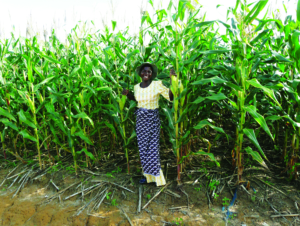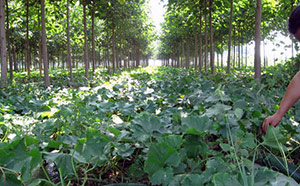 Some of my previous posts have been a bit gloomy, but I feel the need to inject some positive energy into the conversation we’ve been having about climate change.
Some of my previous posts have been a bit gloomy, but I feel the need to inject some positive energy into the conversation we’ve been having about climate change.
Actually… scratch that.
I injecting “positive energy” just for the hell of it isn’t really my thing. However, I have come across some research recently that has actually given me some real hope and reassurance.
Previously, I focused a lot of my ire on policymakers’ reliance on unrealistic mitigation solutions mainly revolving around negative emissions technologies (NETs), most prominently BECCS. Now my stance on NETs hasn’t changed; which is, though they should be thoroughly researched these technologies are in no way reliable, as of yet, and cannot be considered as a plan A for addressing climate change. However, after reading books like Drawdown and Growing a Revolution I’ve come across techniques to sequester carbon that are not only feasible but are already viable and in many cases profitable.
This is a bit of a game changer. Immediate action still must be taken to phase out fossil fuels —and retroactive action would be a lot better though unfortunately that’s still impossible— but these techniques, which mainly focus around agriculture, can give us some much-needed breathing room. And unlike the other NETs I reviewed in earlier posts, we don’t have to wait around for new technology to be invented to implement these strategies. In fact, many farmers across the world are already doing so and all we need to do is just expedite that process.
So what are these magical techniques and strategies I’ve been teasing? Well, the five big ones are conservation agriculture, regenerative agriculture, tree intercropping, managed grazing, and silvopasture —and no silvopasture does not involve herding cows with silver, though what it does involve may be even more surprising.
According to estimates from Project Drawdown, together these five techniques could reduce our CO2 emissions by almost 100 gigatons by 2050. For reference, Project Drawdown does not predict maximum utilization of these techniques but instead integrates them into a global network of solutions to produce feasible yet aggressive figures without double counting (if you want to dig deeper into these & the rest of their proposed solutions I would highly suggest reading Drawdown and visiting their website)
So now let me give you the way too short summary of how these five techniques & strategies work.
To start, they’re all based on the simple concept of returning carbon to the soil. Traditional farming and grazing practices don’t only deplete soil carbon, but they actually initiate the release of sequestered carbon into the atmosphere accelerating the greenhouse effect warming our planet.
The first strategy I’ll review, conservation agriculture, involves the use of cover crops, diversified crop rotations, and no-till farming to return that carbon back to the soil and keep it there. When used in tandem these practices revitalize the natural symbiotic relationship between plants and soil microbes. This improves soil health & fertility, and healthier soils trap more carbon then degraded soils.

However, the real beauty of conservation agriculture is that increasing soil carbon content also allows farmers to reduce the amount of pesticides, herbicides, and petrochemical fertilizers they have to use to run their farms. This dramatically reduces the input costs to farming, resulting in higher profits, while at the same time reducing the amount of time they have to spend working in the field.
So it’s the proverbial win-win.
Farmers make more money and have more free time all while helping to save the planet. Oh and as a side benefit conservation agriculture reinvigorates unproductive and degraded land, which is the exact opposite of what traditional farming does. So conservation agriculture will not reduce our greenhouse gas emissions but will also help to combat world hunger by increasing the amount as well as the productivity of arable land.
So it begs the question why haven’t all farmers converted to conservation agriculture?
Well, so but surely they are, but unlike traditional agriculture which just involves calculating how many chemicals you need to put into the ground, conservation agricultural techniques only truly work when the three legs of the stool (cover cropping, crop rotation, and no-tillage) are used in tandem and many farmers just aren’t aware of that yet. This is where government programs, and most importantly local research farms can persuade & help teach farmers around the world how to implement these techniques most effectively. (I would also highly suggest reading David Montgomery’s growing a Revolution to see how leaders in the agricultural world are already trying to do this)
Regenerative agriculture most simply is just a supercharged version of conservation agriculture. It involves fine-tuning cover cropping, crop rotation, and no-tillage techniques to completely eliminate the need for chemical fertilizers, pesticides, and herbicides. This is not to be confused with organic farming which on his own doesn’t significantly sequestered carbon or improve soil health.
Regenerative agriculture requires careful study of the local ecology and soil biology to determine what crops should be used for cover cropping & commercial cropping, and which rotation & crop diversity strategies will best inhibit the growth of weeds and infestation of pests.
Together conservation agriculture can be seen as a bridge to regenerative agriculture. Young farmers would start off by implementing conservation agricultural techniques and by studying their successes and failures will eventually discover regenerative techniques that will further reduce their need for petrochemicals while increasing the amount of carbon their farmlands sequester.

Tree intercropping is a particular regenerative technique that involves the planting of well… trees, alongside commercial crops. I highlight this technique because of its unique ability to sequester carbon. Intercropping trees amongst shorter commercial crops can more than triple the amount of carbon a plot of land can sequester when compared to typical conservation agricultural techniques.
Trees and deep-rooted plants, in general, draw up nutrients and minerals up to shallower parts of the soil which benefits short-rooted traditional commercial crops. Trees also act as windbreaks reducing soil erosion while creating habitats for birds and other pollinators. Additionally, the planting of trees facilitates the growth of fuller and richer ecosystems, which contrary to popular belief, benefits farmer’s commercial crops in the same way it does for short plants and shrubs in the wild.
Now in this long conversation about agriculture and farming we have thus far ignored a major elephant in the room —or you could say a cow in the room. Raising livestock accounts for about 11% of all human-induced greenhouse gas emissions annually. So what if we could use livestock to actually sequester carbon?
Well here’s where managed grazing comes into play.
Earlier I failed to elaborate on why conservation and regenerative agricultural techniques improve soil health. These practices reinvigorate soil biology by reanimating the natural process that results in the exchange of resources between plant roots and the soil microbes that live alongside them.
Microbes feed on animal waste, plant debris, and minerals trapped within the soil. Microbial digestion then returns nutrients back into the soil in a form plants can consume. Recently, however, scientists have discovered that this process also works in reverse; some of the sugars plants produce from photosynthesis aren’t consumed by the plant itself but rather excreted back into the soil.
Why pump good plant food back into the soil you ask? Well, these sugars called plant exudates supercharge microbial growth, and as we just mentioned soil microbes convert rocky minerals into a form plants can use to grow and thrive. Now, this is where managed grazing comes in.
When cows graze they cut and wound the foliage beneath them. To heal plants need additional nutrients from soil microbes so they excrete more exudates in the ground, this leads to an increase in microbial population and in turn more fertile soil that sequesters more carbon.
The key to managed grazing, however, is that you must rotate the Iivestock in a fashion that allows the plants they graze to recover, as opposed to pinning up cattle on a single plot of land as traditionally done. Managed grazing aims to recreate the conditions of natural grazing which maintained healthy ecosystems like the Great Plains for thousands of years.
Last but not least, the final technique I’ll be overviewing today is silvopasture. So what is it? Well, it’s the practice of planting trees on a pasture.

Now for those of you into old westerns and cowboy movies planting trees on a pasture seems pretty counterintuitive; however, silvopasture is an ancient practice and according to the researchers at project drawdown this technique sequesters 5 to 10 times more carbon then treeless pastures. Additionally, introducing ecological diversify to the pasture not only improves the health and well-being of livestock but the trees themselves can be cultivated to produce fruits and nuts giving farmers additional revenue streams.
Planting trees on the land also makes the pasture more resilient to erratic weather and extreme droughts, which in turn makes them more resilient to impending consequences of continued global warming.
The implementation of these techniques requires a skilled hand & a sharp mind, but our farmers are up to the task. However, like with most things bad policy and slow-footed lawmakers are making it harder than it should be for farmers to adopt these practices. Thoughtful and focused public policy could accelerate this transition rather than stymie it so I implore us, activists, to lobby our politicians to re-examine our agriculture policy at all levels of government. The benefits are far too great —and the costs much too low— for us not to act to implement these solutions.